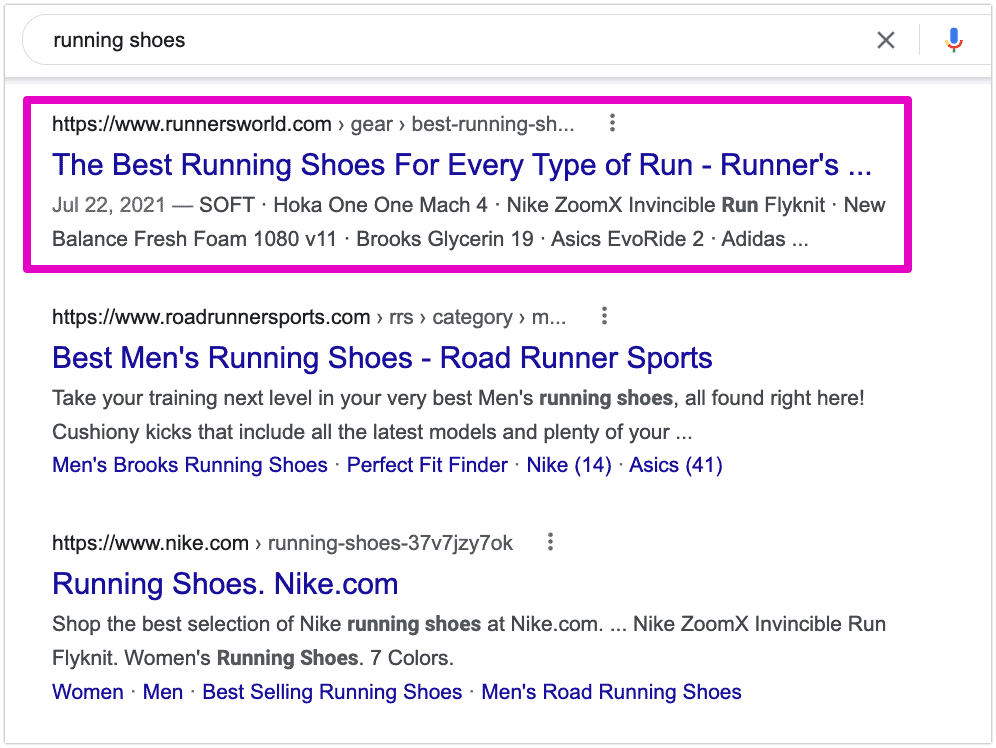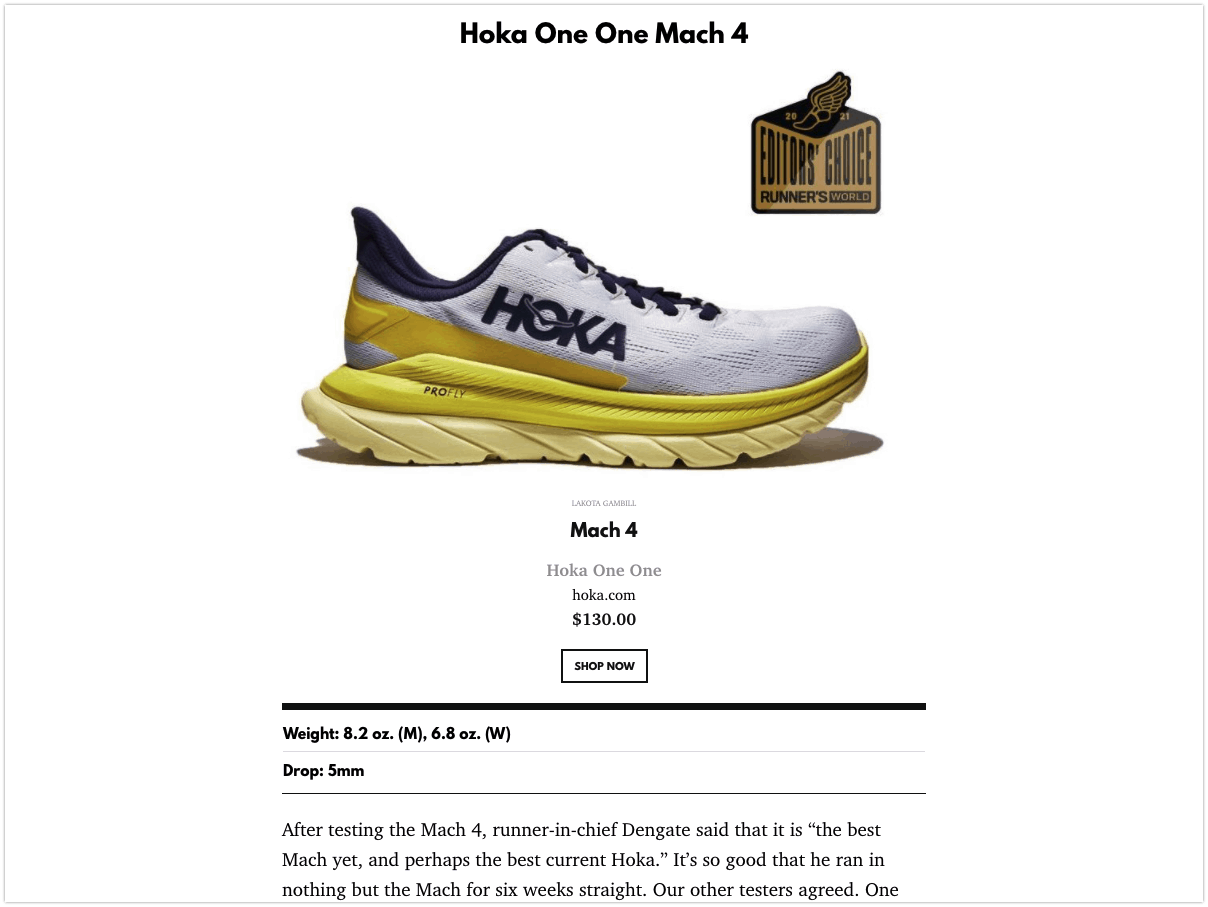“Search intent” basically means giving people the kind of content they’re looking for.
(Or at least what Google thinks they’re looking for.)
Search intent has become a significant part of how Google decides which content gets top rankings.
Which makes it a critical component of SEO content optimization.
The easiest way to nail search intent is to make a Google search for the main keyword you’re targeting. And look at what’s ranking well.
Take the keyword “running shoes”, for example.
If Google thought people searching for “running shoes” wanted to buy a specific shoe, then a product page for that shoe would be the #1 ranked result.
Spoiler:
It isn’t.
Here’s the actual #1 result:

It’s this 7,000+ word buyer’s guide from Runner’s World.
The guide covers 25 different models of running shoe from many different brands. Each with its own description and mini-review, like this:

And this guide isn’t unique in its approach.
Every piece of content on the first page of Google for the keyword “running shoes” features more than just one shoe. That tells us something important about this keyword’s search intent.
Specifically:
Google believes that the people searching for “running shoes” are looking for content about a wide range of running shoes.
Not just one brand and model.
Doing a great job with search intent will help:
- Decrease your content’s bounce rate
- Reduce pogo-sticking (when someone clicks through to your page from Google, and then hits the “back” button in their browser to click on a different page instead)
- And improve your user satisfaction.
Which can have a big impact on your search traffic and rankings.
